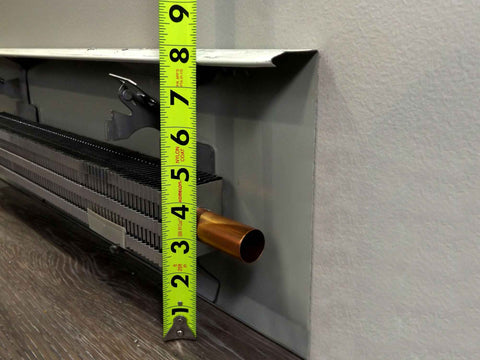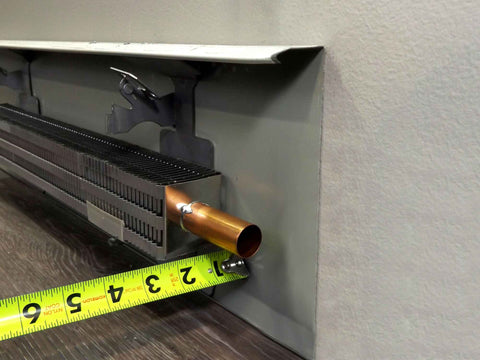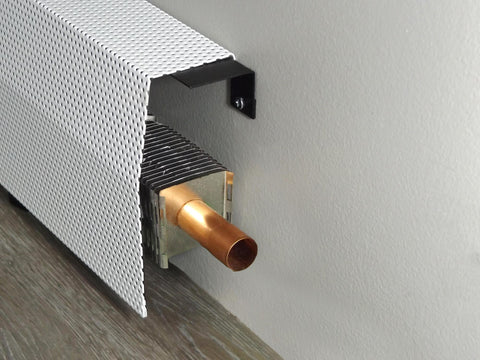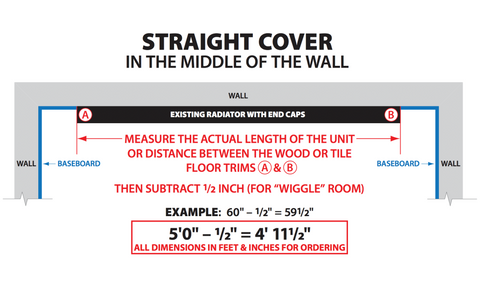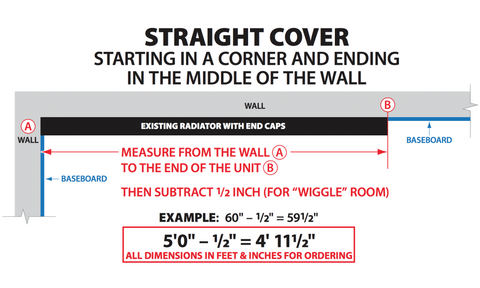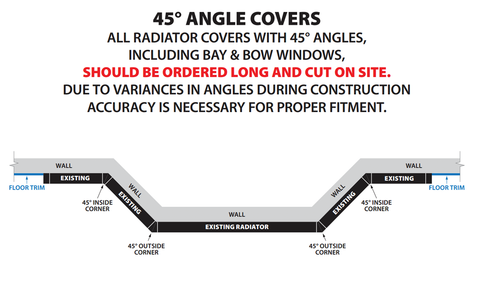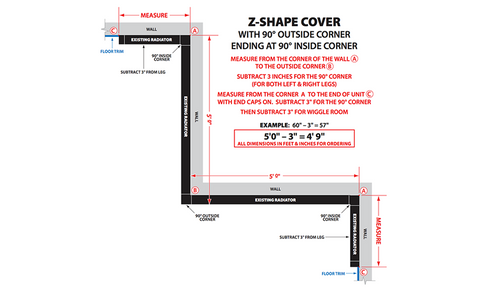Baseboard heaters provide comfortable, reliable heat for homes and rental properties. However, one detail is often overlooked until it poses a problem: the corners of those heaters. Whether you’re a homeowner or a property manager, knowing how to handle baseboard heater corners can increase safety, boost heater performance, and make your living space look great. This guide will walk you through what you should know about baseboard heater corners and how to address common issues.
Understanding Baseboard Heaters
Before focusing on the corners, let’s take a step back and review what baseboard heaters are and how they work. Most baseboard heaters use electric or hydronic (hot water) systems. They’re typically installed along the bottom of exterior walls, where they use convection to draw cold air in from the floor, warm it up, and circulate it back into the room.
The key benefits of baseboard heaters include:
- • silent, even heating with no noisy fans
- • easy installation compared to ducted systems
- • minimal maintenance requirements
- • zoned heating so you can control temperatures room by room
Despite their advantages, baseboard heaters have design features requiring extra attention, especially the corners.
Why Baseboard Heater Corners Matter
Baseboard heater corners may seem like a small detail, but they play a big part in the overall safety, maintenance, and appearance of your rooms. Neglecting the corners can lead to accidental bumps, safety hazards, and cleaning headaches. Understanding these issues helps you make better decisions about upgrades and maintenance.
What To Know About Baseboard Heater Corners
Baseboard heater corners often raise questions about safety and appearance. Here’s an overview of what you need to know:
- • Corners are prone to sharp edges.
- • They tend to accumulate dust and grime.
- • Heat is often retained in the corners longer than on flat surfaces.
Let’s break down these points further and see what solutions exist.
Sharp Edges
The metal corners of standard baseboard heaters often include sharp edges. These can cause minor cuts or scrapes, especially for families with small children or energetic pets. Accidents like this are more common than you might think, especially in busy hallways or cramped rooms.
Dust Accumulation
Corners of baseboard heaters tend to be magnets for dust, pet hair, and other debris. Not only does this make cleaning tougher, but built-up dust can release unpleasant odors and reduce your heater’s efficiency when running. Keeping these areas clean is important for air quality and peak performance.
Heat Retention
Metal corners can sometimes hold onto heat even after you turn off the unit. For this reason, these corners can occasionally cause harm if someone brushes against them accidentally. This is an important safety consideration in family homes and rental units.
Placement Risks
Improper installation of baseboard heater corners can lead to sticking out or misaligned pieces. This increases the chances of injuries and might also cause damage to walls, doors, or nearby furniture. When corners aren’t flush with the wall, they can easily catch on clothing or get bumped while vacuuming.
Corrosion Concerns
Over time, moisture and regular use can cause the metal at the heater corners to rust or corrode. This can impact the look and the structural integrity of your heater. Corroded corners aren’t just an eyesore; they can also weaken the cover and cause it to warp, making repairs or replacements necessary.
Vulnerable to Impact
Corners take the brunt of impacts from vacuums, brooms, moving furniture, and busy foot traffic. Dents and dings harm the appearance and the proper operation of the heating unit. Bent corners may even affect air flow, reducing heating efficiency.
Child Safety
Because baseboard heaters are installed near the floor, their corners are within easy reach of toddlers and young children. Sharp or hot corners pose a hazard. Childproofing these areas with secure covers is essential in any home with kids.
Cleaning Challenges
The tight angles of heater corners collect dust and grime, making them one of the trickiest places to clean. Dirt can settle in these spots for months, leading to poor hygiene and contributing to allergies.
Design Options
Many manufacturers have started to offer baseboard heaters with rounded or smooth-corner designs. These modern styles don’t just look better; they also minimize the risk of injuries and make cleaning easier. Upgrading heaters with friendlier corners can make a big difference in safety and style.
Protective Covers
Installing protective corner covers or guards can solve multiple problems at once. They shield sharp edges, prevent dust buildup, reduce the risk of burns, and hide any existing damage. Some covers, such as those offered by EZ Snap Covers, go a step further by improving aesthetics and making the heater easier to maintain.
Solutions for Baseboard Heater Corners
You don’t have to live with hazardous or unsightly baseboard heater corners. Below are several options for making corners safer and more attractive.
1. Baseboard Heater Covers
EZ Snap Covers’ heater covers provide an excellent solution for covering old, damaged, or unsafe baseboard heater corners. These covers fit directly over your existing heater, eliminating sharp edges and covering rust or dings in seconds.
The benefits of our heater covers include these:
- • safe, rounded edges reduce injury risk
- • epoxy-coated steel prevents rust and corrosion
- • easy to install with no special tools
- • stylish design upgrades the look of any room
- • simple to remove for cleaning or maintenance
2. Corner Guards and Childproofing Accessories
You can find various childproofing products designed for baseboard heater corners. Silicone or plastic guards cushion the corners, preventing burns and scrapes, and provide peace of mind if kids or pets are frequent visitors.
3. Routine Cleaning and Maintenance
Staying on top of cleaning prevents dust buildup and maintains indoor air quality. Use a small, flexible vacuum attachment or a microfiber cloth to reach the corners. If you’ve installed EZ Snap Covers, you’ll find that smooth surfaces make cleaning much simpler.
4. Regular Inspections
Check your baseboard heater corners every few months. Look for signs of rust, dents, or alignment issues. Correcting problems early can prevent more serious safety issues and prolong the life of your heating units.
5. Upgrading Design Features
When it comes time to replace your heaters, consider models with rounded or enclosed corners. Not only do they provide added safety, but they also lend a modern, finished look to your space.
Take Action for a Safer, Smarter Home
Understanding what you should know about baseboard heater corners greatly impacts your home’s safety, comfort, and appearance. Sharp edges, dust, and damage are all fixable with the right approach.
If you want a simple upgrade, explore the easy-to-install baseboard heater replacement covers from EZ Snap Covers. Their high-quality construction and sleek, family-friendly design make them the perfect choice for homeowners and property managers who want safer, better-looking heating solutions with zero hassle.
Don’t wait for a bump, scrape, or cleaning catastrophe to act. Take a few minutes today to assess your baseboard heater corners, and invest in the solutions that protect your home and loved ones.
